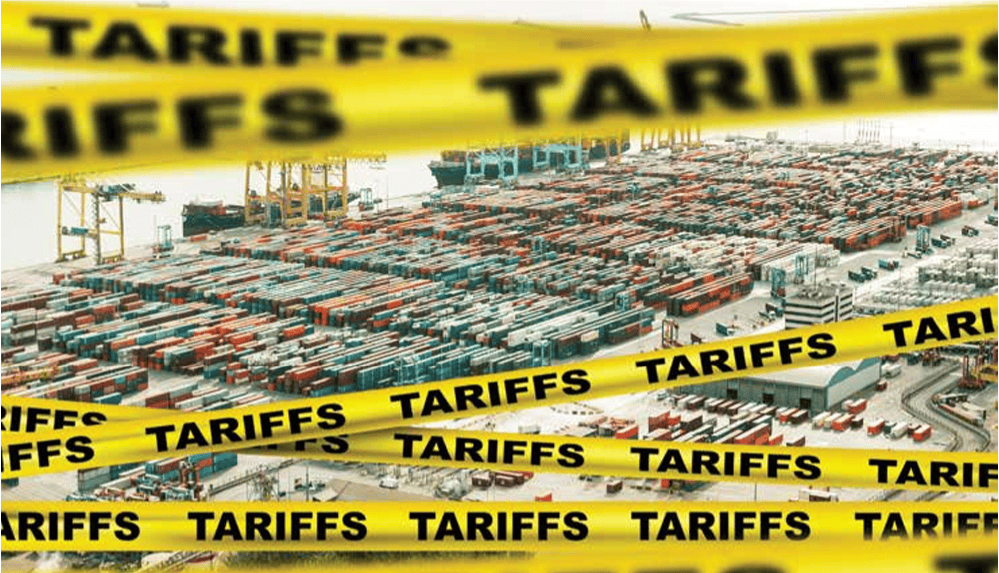Optimizing the movement of goods leaving coastal ports.
With ever increasing pressure on supply chains to improve cost structure and better optimize processes, a major focus has been on improving efficiencies. This includes the use of inland ports.
“Among the advantages inland ports offer are the potential for lower priced real estate, wage rates, energy and operating costs,” says Brian Beattie, President, North America West, Lineage Logistics. “They can also be considered a greener alternative due to quicker movement of containers away from congested seaports and more efficient storage capabilities.” In addition, Beattie notes inland ports deliver benefits for both import and export goods. “Many seaports and port warehousing locations have been at capacity for a number of years,” he says. “Inland port locations are providing an alternative to handle and store goods that were imported or are getting ready for export.”
A Variety of Systems
While primarily used for break bulk and nonperishables container freight, demand for inland ports has been increasing. Some inland ports like the Port of Virginia’s Richmond Marine Terminal (RMT) in Richmond, Virginia, are physical places involved in the transloading of cargo from one transport mode to another. Others operate as statewide systems. RMT operates on 80 acres within a secure terminal and has a 1,570-foot-long wharf available for berthing and handling containers, including those that are temperature controlled. What makes this port unique is its barge service to and from the Port of Virginia in Norfolk, which offers two portable 40-plug central power units used in transporting refrigerated goods. “We move a fair amount of cold cargo for Lidl, which has a distribution center outside of Richmond,” says Joe Harris, spokesman for the Virginia Port Authority. “Richmond has always been a collection point for pushing cargo a couple of miles inland to destination.” Lidl is a large regional grocer based in Germany. The expanded refrigerated cargo capability on barges is part of the port’s larger strategic growth plan to make the port a destination for cold cargo. “There is not a lot of barge service in the United States, and ours is the oldest and most successful,” Harris notes. “Lidl has experience moving containers by barge in Europe so it was comfortable with us. It was a selling point for us.” The Utah Inland Port Authority (UIPA) operates as a statewide system throughout the U.S. state of Utah. It provides what it calls “smart, sustainable and equitable logistics solutions that use a statewide, multimodal approach to increase utilization and expand commerce access throughout the state.” UIPA leverages expertise, facilities and infrastructure, and capital investment to improve logistics within the statewide system. Of note, is the agreement UIPA signed with the Port of Long Beach in California to improve cargo flows between Southern California and Utah, Colorado, Nevada and Idaho. The agreement calls for the Port of Long Beach to invest $1 billion in rail improvements over the next 10 years, and UIPA to strengthen its ability to transfer cargo for further distribution. “Working directly with the Port of Long Beach creates a synergy and stability that opens opportunities for Utah businesses to move goods more efficiently,” says Jack Hedge, Executive Director, UIPA. The Union Pacific (UP) Railroad is playing a part in the initiative. “UP’s direct rail service between the Port of Long Beach and Salt Lake City will allow cargo to be rapidly evacuated from terminals in Long Beach for further distribution throughout the region,” Hedge says. Much of that cargo currently moves by truck, he noted, and only 10% by rail.
Meanwhile, other seaports are embarking on inland ports that have been highly successful overall, but not yet successful in attracting chilled or frozen goods movement. Among these are the inland ports operated by the Georgia Port Authority (GPA). Edward Fulford, GPA spokesman, acknowledged that there has been some interest in moving refrigerated cargo to and from GPA’s Appalachian Regional Port. “However, the support infrastructure is not there at present,” he says. “The containers would have to be powered by clip-on generators. While boxes are in transit via rail, no technicians are available to check the generators to ensure they are fueled and working properly. Obviously, an issue with a generator could put cargo at risk. For that reason, refrigerated containers moving via the Port of Savannah are transported overland by truck.”
Inland Advantages
One of the biggest advantages to inland ports in the United States is that they offer shippers and their logistics operators planned alternatives for goods coming in or out of the country. “If customers make decisions to increase capacity over and above our port capability, we can offer different locations to handle and store their goods,” explains Beattie. “We also provide transportation data analytics to help shippers determine if these alternative locations will reduce trans spend.” Beattie further explains that inland ports help Lineage Logistics support its customers’ import and export logistics strategies as well as their domestic distribution efforts. He notes that the cities of Chicago, Atlanta and Dallas are among the most vital inland ports Lineage serves. “They are critical distribution hubs for our customers,” he says. “These are the most important locations for producers and retailer/food service.” Particularly critical is the fact these locations are both truck and rail served, despite the fact over the road is still a larger percentage for Lineage’s refrigerated business. “Transportation flow is important to ensure over the road carriers are accessible and rail is available … at competitive pricing,” he says.
Location Location Location
The Chicago metropolitan area, known locally as Chicagoland, is an example of an inland port where Lineage is very active. “Customers use Chicagoland for both import and export goods, with containers both loaded and unloaded at our facilities there, and that includes domestic distribution,” Beattie says. “The containers then move via rail and over the road between those facilities and warehouses and other distribution points for our shipper customers.” Chicagoland’s long history as a logistics hub is due to the fact the Port of Chicago consists of several major port facilities within the city of Chicago and is multimodal. The port also links inland canal and river systems in the Midwestern United States to the Great Lakes region, which gives access to global shipping in the St. Lawrence Seaway and ultimately the Atlantic Ocean and Gulf of Mexico by way of the Mississippi River. As a multimodal terminal, Chicago Port and Rail LLC can handle loading or off-loading of cargo from barges, vessels, trucks and rail cars. Similarly, Dallas, Texas, offers inland port advantages. The International Inland Port of Dallas (IIPOD) operates as an intermodal and logistics district that encompasses 7,500 acres over five municipalities. IIPOD offers direct access to three major interstate highways with all major North American markets accessible within 48 hours by truck. It also provides access to the Union Pacific Dallas Intermodal Terminal in southern Dallas County, which provides intermodal access to the Ports of Los Angeles and Long Beach.
And finally, the port connects to Foreign Trade Zone 39 that provides trade zone sites in the IIPOD area that may allow businesses to delay, reduce or eliminate customs duties on some import categories. Other locations in the United States have also exploded as inland logistics centers. One is Logistics Park Kansas City (LPKC), a 3,000-acre, master-planned distribution and warehouse development in Edgerton, Kansas, just southwest of downtown Kansas City. LPKC is home to ColdPoint Logistics, which has expanded three times, currently operates a 650,000-square-foot cold storage facility at LPKC and has direct rail access to its facility. LPKC is served by BNSF Railway, which connects the market to the Ports of Los Angeles and Long Beach. Shipments can reach 85% of the U.S. population by truck in two days or less from LPKC. It also has capacity for 17 million square feet of industrial buildings. “Without the rail, a facility like Logistics Park Kansas City doesn’t exist,” says James Oltman, President, LPKC. “Containers can arrive in Edgerton approximately two days after leaving coastal ports, making shipping through an inland port one of the most efficient ways to move goods. Services offered by the ports themselves are limited and are left to the partnerships that are formed within the cold storage industry. In addition, co-locating at a facility like LPKC significantly reduces transportation. “When you can calculate your drayage in feet instead of miles and multiply that by thousands of containers a year, the savings is significant,” Oltman says. But there are also downsides to utilizing inland ports for refrigerated distribution/ warehouse needs. “It is important that there is a steady flow of containers, trucks and rail cars into and out of the port to ensure no disruptions in the supply chain,” says Beattie. “Some inland ports don’t have the modal units required to support the volume of goods shipped.”
KAREN E. THUERMER is a freelance writer based in Alexandria, Virginia, who specializes in economic and logistics issues.
EMAIL: kthuermer@aol.com
Source: Cold Facts November/December 2022 issue



